You’ll want to plant sweet alyssum, dill, and echinacea to attract beneficial insects that’ll naturally control pests and boost pollination in your garden. Sweet alyssum creates fragrant spreading mounds that draw bees, butterflies, and predatory insects like hoverflies throughout the season. Dill’s delicate umbrella flowers specifically target parasitic wasps that reduce garden pests, while echinacea provides months of continuous nectar for diverse pollinators from mid-summer through fall. These strategic plantings create a thriving ecosystem that supports your garden’s health year-round.
Sweet Alyssum: A Fragrant Ground Cover for Pollinators and Predators
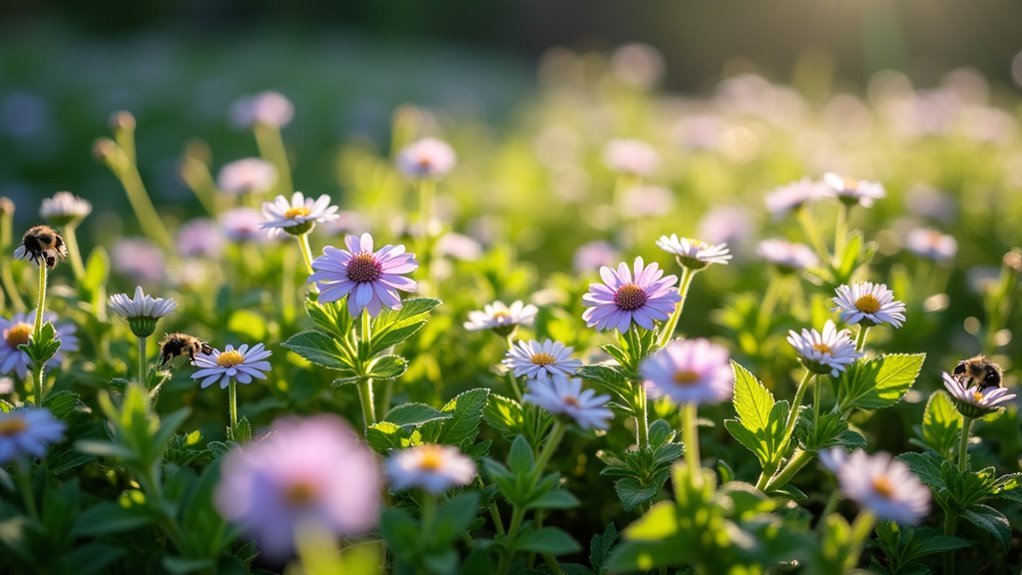
When you’re searching for a versatile ground cover that doubles as a pollinator magnet, Sweet Alyssum (Lobularia maritima) delivers exceptional results. This resilient plant forms spreading mounds of fragrant flowers that attract bees, butterflies, and other pollinators throughout the growing season.
You’ll appreciate its continuous nectar production, which supports beneficial insects when other plants aren’t blooming.
Sweet Alyssum goes beyond attracting pollinators—it draws predatory insects like hoverflies and lacewings that provide natural pest control in your garden. As an effective ground cover, it suppresses weeds while creating habitat for ground-dwelling beneficial insects.
You’ll find it thrives in well-drained soils and tolerates poor conditions, making it an excellent choice for enhancing biodiversity in challenging garden areas.
Dill: Tiny Flowers That Attract Parasitic Wasps and Beneficial Flies
While Sweet Alyssum excels at drawing pollinators with its showy blooms, dill takes a different approach with its delicate umbrella-shaped flower clusters that specifically target parasitic wasps and beneficial insects.
These tiny flowers provide an essential nectar source during late spring and early summer when natural pest control activity peaks.
Dill’s multi-layered benefits make it invaluable for organic gardening:
- Dual habitat creation – The feathery foliage shelters predatory insects while flowers feed parasitic wasps
- Versatile growing options – You can plant dill in garden beds or containers, making it accessible regardless of space
- Proven pest reduction – Studies demonstrate that dill’s presence notably enhances pest parasitism rates, reducing garden pests naturally
This easy to grow herb transforms your garden into a thriving ecosystem.
Echinacea: Native Blooms for Long-Season Butterfly and Bee Support
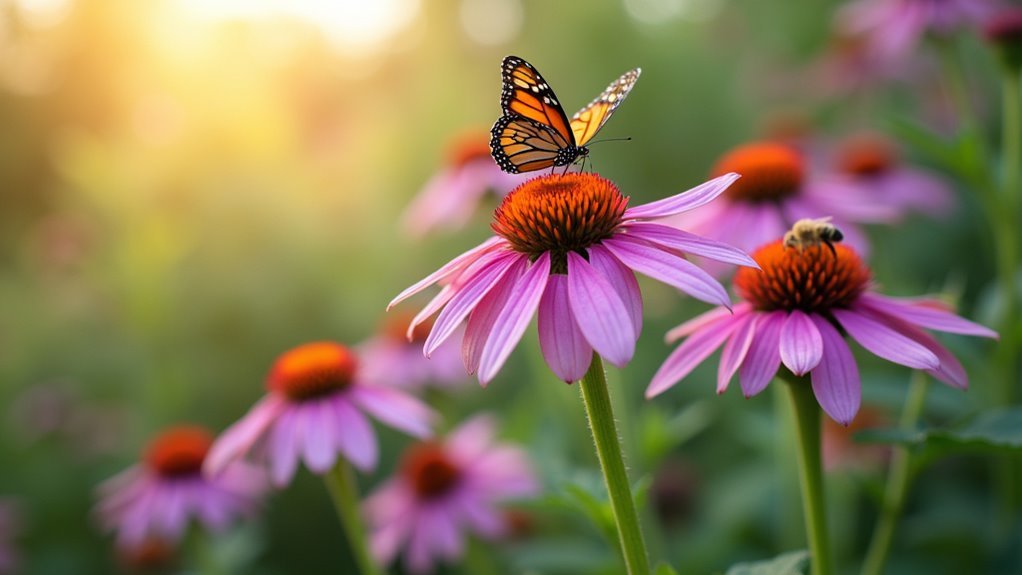
Unlike herbs that offer brief seasonal blooms, Echinacea delivers months of continuous nectar from mid-summer through fall, making it a cornerstone plant for sustaining butterfly and bee populations during their most active period.
This drought-tolerant native plant thrives in various soil conditions, requiring minimal maintenance while maximizing pollinator support. You’ll attract diverse beneficial insects including honeybees and bumblebees to your garden, greatly enhancing local biodiversity.
Echinacea’s vibrant pink and purple flowers provide exceptional aesthetic appeal alongside ecological benefits. The plant’s value extends beyond blooming season—persistent seed heads offer winter food sources for birds and shelter for beneficial insects.
You’re investing in year-round garden health while supporting vital pollinators through their extended active season.
Frequently Asked Questions
What Plants Attract Beneficial Insects?
You’ll attract beneficial insects by planting fennel, dill, coneflowers, cosmos, mint, yarrow, milkweed, and aster. These plants provide nectar, shelter, and continuous blooming throughout the season while creating balanced garden ecosystems.
What Plant Keeps Bugs Out of Garden?
You’ll want to plant marigolds, garlic, and mint around your garden’s perimeter. These aromatic plants effectively repel aphids, nematodes, and various pests through their strong scents while creating natural protective barriers.
What Plants Attract Minute Pirate Bugs?
You’ll attract minute pirate bugs by planting yarrow, dill, sweet alyssum, Queen Anne’s lace, and fennel. These beneficial insects prefer small, clustered flowers from diverse plants that bloom continuously throughout the growing season.
What Are the Annual Flowers for Beneficial Insects?
You’ll attract beneficial insects with cosmos, zinnias, sweet alyssum, dill, marigolds, yarrow, and bronze fennel. These annuals provide continuous nectar and pollen, supporting pollinators, predatory beetles, hoverflies, and parasitic wasps throughout your growing season.
In Summary
You’ll transform your garden into a thriving ecosystem by planting these three powerhouse plants. Sweet alyssum’s carpet of blooms will draw beneficial predators close to ground level, while dill’s delicate flowers attract parasitic wasps that’ll control harmful pests. Echinacea’s sturdy blooms provide season-long nectar for butterflies and bees. You’re not just growing plants—you’re creating a balanced habitat where nature’s helpers can flourish and protect your garden naturally.

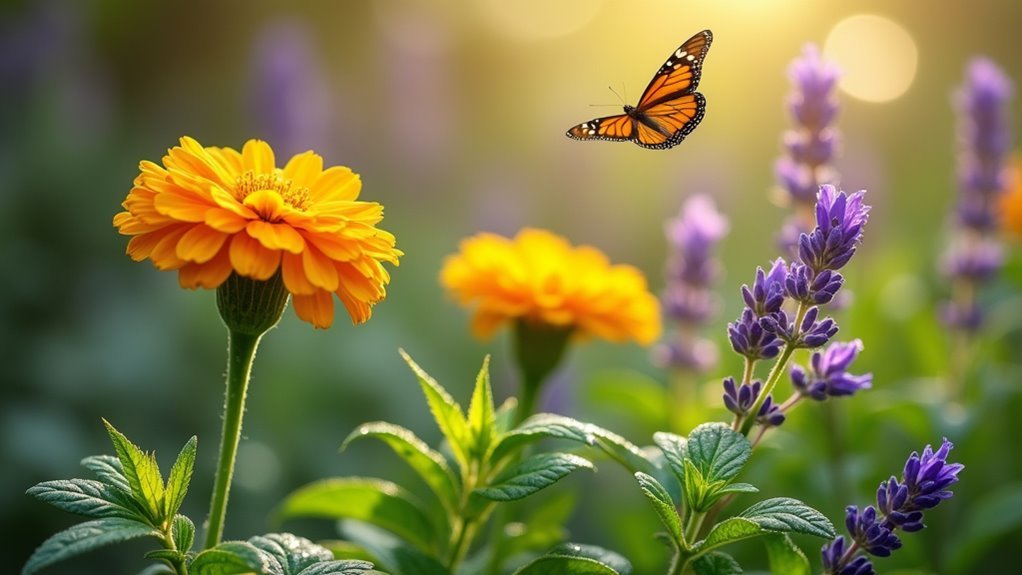
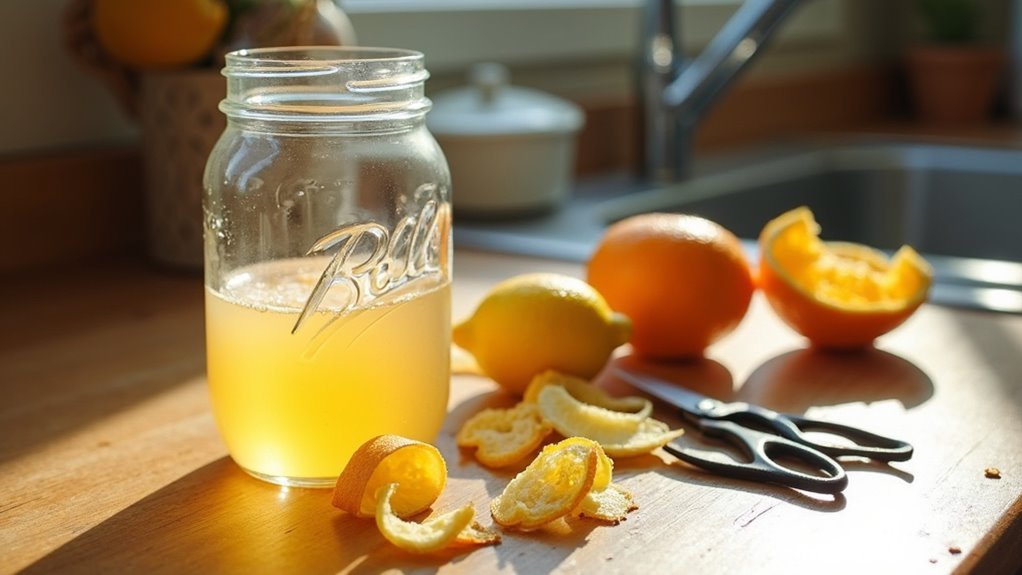
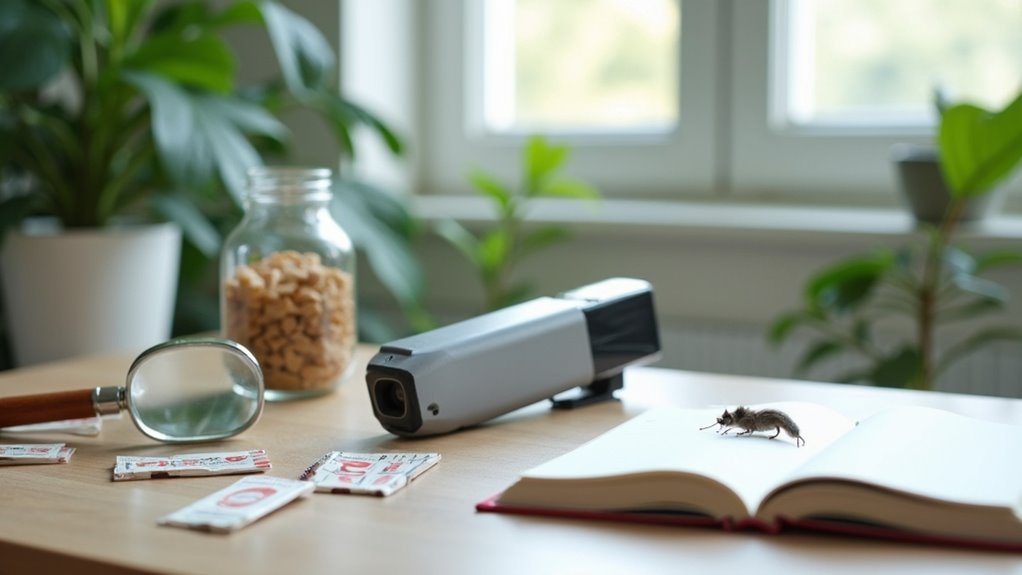

Leave a Reply